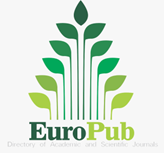Basuki Rahmat Corridor’s sidewalk: an observation
DOI:
https://doi.org/10.61511/seesdgj.v1i1.2023.196Keywords:
commercial area, pedestrian, pedestrian path, walkabilityAbstract
The Tunjungan area, especially the Jalan Basuki Rahmat corridor, is the object of this study because this corridor is an essential element of accessibility for the trade and service area of Surabaya City.. This study aims to observe the environment of the Basuki Rahmat Street corridor and identify the condition of the existing pedestrian paths. The research questions are as follows: (1) Identifying Basuki Rahmat corridor in general; (2) Analysing sidewalk’s condition along the Basuki rahmat corridor. This research has clear goals because the previous research has yet to elaborate detailed information on the Basuki Rahmat corridor comprehensively. Thus, this study will produce profound observations on how the sidewalk condition is maintained and affects surrounding land use. Observations were made by visiting the study location directly to observe the existing condition of the pedestrian paths in the Jalan Basuki Rahmat Corridor, Surabaya. Observations were carried out in 3 ways, namely (1) field observations related to the existence of facilities, furniture, and the condition of the pedestrian paths, and (2) direct measurements related to the dimensions of the pedestrian paths. From the study, the researcher found that 92,4% of the land uses are covered by commercial areas. Meanwhile, 2084,43 meters (0,2 km) of the pedestrian paths is Sidewalk, and 197 meters (0,01 km) is Arcade. Another important point to note is the social interaction that occurs is due to the existence of a motorcycle community that utilizes pedestrian paths on weekends. Overall, the researcher discovered that Basuki Rahmat Corridor has an enormous potential to be a walkable area if the facilities are improved. The land use environment has already given a lively vibe because of the various activities offered, yet the stakeholders still need to be concerned with the sustainability of the corridor.
References
Carr, S. (1992). Public Space: Environment and Behavior. Cambridge: Cambridge University Press.
https://books.google.com/books/about/Public_Space.html?id=pjo4AAAAIAAJ
Fruin, J. (1971). Pedestrian Planning and Design. New York: Metropolitan Association of Urban Designers and Environmental Planners, Inc. https://trid.trb.org/view/114653
Halim, D K. (2008). Psikologi Lingkungan Perkotaan. Bumi Aksara. Jakarta.
Hendrayana, I. G. B. K., Wedagama, D. P., & Widiarta, I. I. B. P. (2013). Analisis Pelayanan Fasilitas Pejalan Kaki. Jurnal Ilmiah Elektronik Infrastruktur Teknik Sipil, 2(1). https://ojs.unud.ac.id/index.php/jieits/article/view/5099
Heryanto, Bambang. (2011). Roh dan Citra Kota. Brilian Internasional. Surabaya. https://dokumen.tips/documents/roh-dan-citra-kota.html
Kerridge, J., Hine, J., & Wigan, M. (2001). Agent-based modelling of pedestrian movements: The questions that need to be asked and answered. Environment and Planning B: Planning and Design, 28(3), 327-341. https://doi.org/10.1068/b2696
Krippendorff, K. (2004). Content Analysis: An Introdusction to its Methodology. Sage. https://books.google.com/books/about/Content_Analysis.html?id=q657o3M3C8cC
McCormick, K., & Leccese, M. (Eds.). (2000). Charter of the New Urbanism. McGraw-Hill. https://books.google.com/books/about/Charter_of_the_New_Urbanism.html?id=iWFPAAAAMAAJ
Lenakoly, S. (2007). Penilaian 20 Kota, Pedestrian Surabaya Rangking Satu. http://news.detik.com/read/2007/09/03/100707/824728/466/penilaian-20-kota-pedestrian-surabaya-rangking-satu?nd771104bcj. Diakses 3 April 2014
Karras, G., & Lockyer, N. P. (2014). Quantitative Surface Analysis of a Binary Drug Mixture—Suppression Effects in the Detection of Sputtered Ions and Post-Ionized Neutrals. Journal of The American Society for Mass Spectrometry, 25(5), 832-840. https://doi.org/10.1007/s13361-014-0847-6
Lynch, K. (1960). The Image of The City. MIT Press. Cambridge. https://www.miguelangelmartinez.net/IMG/pdf/1960_Kevin_Lynch_The_Image_of_The_City_book.pdf
Margono, S. (1995). Metodologi Penelitian Pendidikan, Cet.7. Jakarta: Rineka Cipta, 2007. https://opac.perpusnas.go.id/DetailOpac.aspx?id=635125
Mardalis. (2008). Metode Penelitian : Suatu Pendekatan Proposal. Jakarta: Bumi aksara. https://simpus.mkri.id/opac/detail-opac?id=7096
Martilla, J. & James J. (1977). Importance- Performance Analysis. Journal of Marketing, 14 (January): pp. 77-79.
Nasional, Direktorat Perkotaan, Tata Ruang dan Pertanahan, Bappenas
Geoff, N. (2009). Lost Art of Walking. Riverhade Trade. USA. https://www.abebooks.com/9781594484032/Lost-Art-Walking-History-Science-1594484031/plp
Ong, J. O., & Pambudi, J. (2014). Analisis kepuasan pelanggan dengan Importance Performance Analysis di SBU Laboratory Cibitung PT Sucofindo (Persero). J@ Ti Undip: Jurnal Teknik Industri, 9(1), 1-10. https://doi.org/10.12777/jati.9.1.1-10
Patton, M. (2014). Qualitative Research & Evaluation Methods. SAGE Publications. Saint Paul, MN. https://us.sagepub.com/en-us/nam/qualitative-research-evaluation-methods/book232962
Pedoman Perencanaan, Penyediaan, dan Pemanfaatan Prasarana dan Sarana Jaringan Pejalan Kaki di Kawasan Perkotaan. (2014). Direktorat Jenderal Penataan Ruang Kementerian Pekerjaan Umum. https://jdih.pu.go.id/detail-dokumen/377/1
Pradono, J., Senewe, F., Kristanti, C. M., & Soemantri, S. (2005). Transisi kesehatan di Indonesia (Kajian data SURKESNAS). Indonesian Journal of Health Ecology, 4(3), 78228. https://media.neliti.com/media/publications-test/78228-transisi-kesehatan-di-indonesia-kajian-d-44a27de3.pdf
Puskarev & Zupan. (1975). Urban Space for Pedestrian. The MIT Press. Cambridge. https://mitpress.mit.edu/9780262160636/urban-space-for-pedestrians/
Tuwu, A., & Consuelo G, S. (1993). An introduction to research methods (p. 315). UI-Press. https://opac.perpusnas.go.id/DetailOpac.aspx?id=371495
Shirvani, H. (1985). The Urban Design Process. Michigan: Van Nostrand Reinhold. https://www.scirp.org/(S(czeh2tfqw2orz553k1w0r45))/reference/referencespapers.aspx?referenceid=1131926
Slovin, H. U. (2000). Riset Pemasaran dan Perilaku Konsumen Cetakan Ketiga. Jakarta: PT. Gramedia Pustaka Utama. https://lib.ui.ac.id/detail.jsp?id=20144565
Sodik, A. (2003). Organisasi: Perilaku, Struktur, Proses. Terjemahan Nunuk Andriani. Jakarta: Binarupa Aksara.
Southworth, M. (2005). Designing the walkable city. Journal of urban planning and development, 131(4), 246-257.
https://doi.org/10.1061/(ASCE)0733-9488(2005)131:4(246)
Speck, J. (2012). Walkable City: How Downtown Can Save America, One Step at a Time. Farrar. https://www.researchgate.net/publication/276899943_Speck_Jeff_2012_Walkable_City_How_Downtown_Can_Save_America_One_Step_at_a_Time
Suarasurabaya. (2012). Trem dan Monorel Mulai Pembangunan Fisik 2014. http://kelanakota.suarasurabaya.net/news/2012/108022-Trem-dan-Monorel-Mulai Pembangunan-Fisik-2014. Diakses 19 Maret 2014
Sugiyono. (2009). Statistika Untuk Penelitian. Bandung: Alfabeta. https://staffnew.uny.ac.id/upload/131808329/penelitian/17B_Editor+Buku+Statistik.pdf
Surabaya.go.id. (2014). World Bank Apresiasi Persiapan Pembangunan AMC. http://www.surabaya.go.id/berita/index.php?Page_page=9&&tot_Hasil=2452&selSortBy=&txtsearch=&act=. Diakses 19 Maret 2014
Trancik, R. (1986). Finding Lost Space: Theories of Urban Design. New York: Van Nostrand Reinhold
Transportation Research Board. (1985). Highway Capacity Manual. https://onlinepubs.trb.org/onlinepubs/trnews/rpo/rpo.trn129.pdf
UU No 26 Tahun 2007 tentang Penataan Ruang. (2007). Sekretariat Badan Koordinasi Tata Ruang. https://peraturan.bpk.go.id/Download/29499/UU%20Nomor%2026%20Tahun%202007.pdf
Wigananda, M. H., & Kartika, A. A. G. (2012). Analisis Kinerja Jalur Pedestrian di Kota Surabaya (Studi Kasus: Jl. Pemuda). Jurnal Teknik ITS, 1(1), E69-E74. http://dx.doi.org/10.12962/j23373539.v1i1.1233
Zahnd, M. (1999). Perancangan Kota Secara Terpadu: Teori Perancangan Kota dan Penerapannya. Semarang: Kanisius. https://opac.perpusnas.go.id/DetailOpac.aspx?id=293054
Downloads
Published
How to Cite
Issue
Section
Citation Check
License
Copyright (c) 2023 Social, Ecology, Economy for Sustainable Development Goals Journal

This work is licensed under a Creative Commons Attribution 4.0 International License.
















